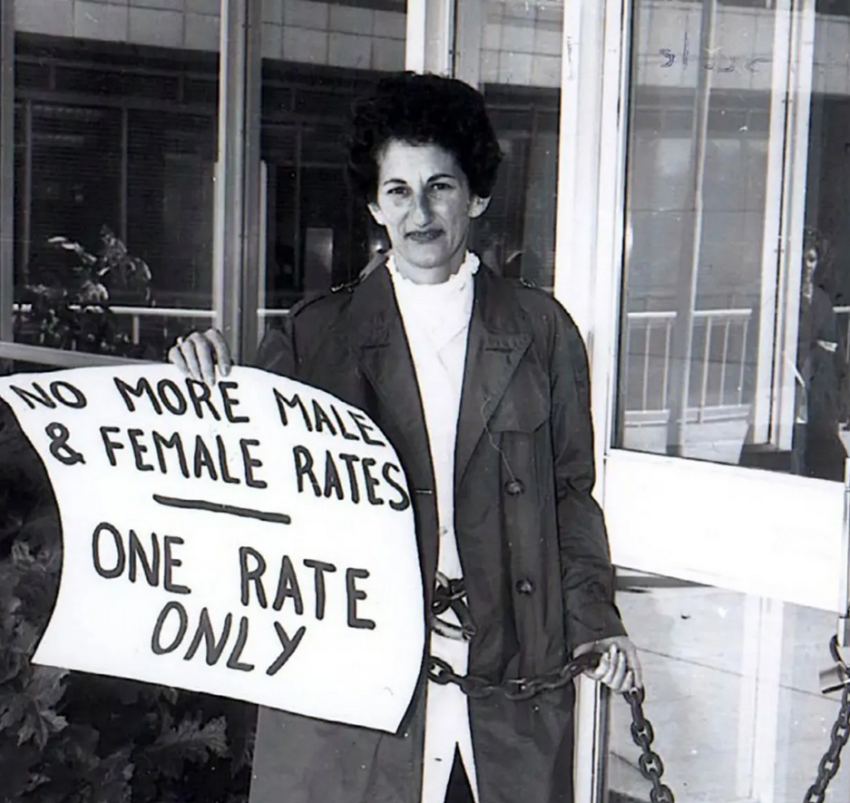
There are more statues of animals than there are of trailblazing women in Victoria and there as many statues of women as there are of animals: three.
Appallingly, but not surprisingly, statues of women on their own who have made history make up just 1% of the state’s statues.
The lobby group A Monument of One’s Own surveyed Melbourne’s statues and found only 36 are of women. Of those, only nine are historical — named after women rather than allegorical or symbolic figures such as nymphs or sprites.
Perhaps in part due to this incredible oversight, Jennifer Mann and her sculpture Chain Reaction have been selected to honour life-long activist Zelda D’Aprano through the Victorian government’s $1 million Victorian Women’s Public Art Program.
D’Aprano was born in Carlton in Melbourne on January 24, 1928, to working-class migrant parents Shimshon and Rachel Orloff (nee Tourkenitz), who were taken as children to Palestine to escape anti-semitic persecution in Russia and Ukraine.
D’Aprano left school at 14 to work in a variety of jobs including as biscuit maker, usherette, seamstress, dental nurse and office worker. She married Charlie D’Aprano at 17 and their daughter Leonie was born a year later.
She was an active trade unionist. After she returned to work as a dental nurse, she almost immediately witnessed the inequalities women faced at work. Having joined the Communist Party of Australia (CPA), she became a writer, peace activist and a member of the Union of Australian Women.
D’Aprano later took up a job in the CPA-led Australian Meat Industry Employees Union, which was taking a test case or equal pay to the Arbitration Court in 1969.
In her most famous protest, in 1969 D’Aprano chained herself to the door of the Commonwealth Arbitration Commission Court in protest at the outcome of a trial case for equal wages for women. A second chain protest was organised with teachers Alva Giekie and Thelma Solomon.
Giekie, Solomon and D’Aprano went on to form the Women’s Action Committee in August 1970, which later led to the formation of the Women’s Liberation Movement in Melbourne.
D’Aprano presented the Women’s Liberation Movement submission to the equal pay case, in the Arbitration Court in 1972, which decided in favour of “work of equal value”.
Among the many stories of D’Aprano’s activism, my favourite is when she only paid 75% of the tram fare to highlight the injustice of women’s pay rates.
D’Aprano campaigned unrelentingly for nearly 30 years for equal pay, health and safety on the job, minimum wages and for women’s rights in general.
She died in February 2018, aged 90. Her autobiography, Zelda: The Becoming of a Woman, documents the women’s movement of the 1970s and is insightful reading today: it’s also a reminder that the struggle is not over.
Mann’s sculpture of D’Aprano in bronze will represent her iconic protest when she chained herself to the door of the Commonwealth Arbitration Commission. It has been commissioned by Victorian Trades Hall Council and A Monument of One’s Own with support from the Victorian government through the Women’s Public Art Program. It will be situated on the south-west lawn at Trades Hall, facing Lygon Street.
[You can donate to build the statue of Zelda D’Aprano here.]